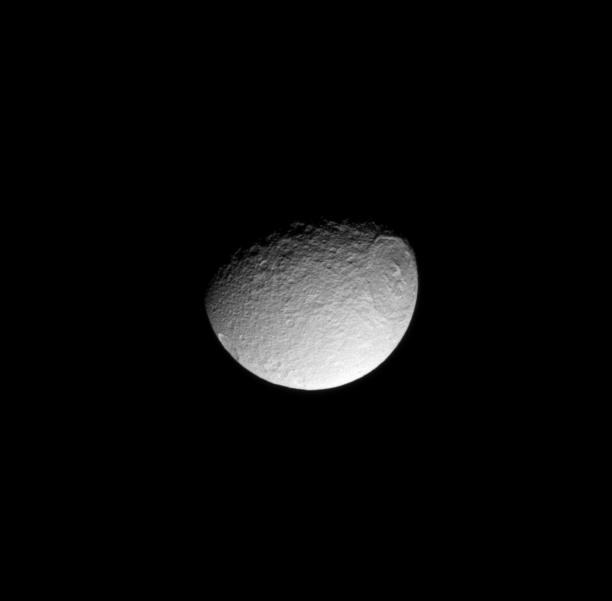Icy Crown on Tethys

| PIA Number | PIA10582 |
|---|---|
| Language |
|
Like the lengthy story of its Greek king namesake, the humongous Odysseus impact basin stretches on and on across Tethys.
The 450-kilometer (280-mile) wide Odysseus is a well-preserved example of an ancient multi-ringed impact basin. The outer ring's steep, cliff-like walls descend to broad internal terraces. The inner ring consists of a circular band of icy mountains creating a crown shape with a diameter of 140 kilometers (87-miles).
This view looks toward the leading hemisphere of Tethys (1062 kilometers, or 660 miles across). North on Tethys is up and rotated 2 degrees to the right.
The image was taken in visible light with the Cassini spacecraft narrow-angle camera on Jan. 2, 2009. The view was obtained at a distance of approximately 816,000 kilometers (507,000 miles) from Tethys and at a Sun-Tethys-spacecraft, or phase, angle of 58 degrees. Image scale is 5 kilometers (3 miles) per pixel.
The Cassini-Huygens mission is a cooperative project of NASA, the European Space Agency and the Italian Space Agency. The Jet Propulsion Laboratory, a division of the California Institute of Technology in Pasadena, manages the mission for NASA's Science Mission Directorate, Washington, D.C. The Cassini orbiter and its two onboard cameras were designed, developed and assembled at JPL. The imaging operations center is based at the Space Science Institute in Boulder, Colo.
For more information about the Cassini-Huygens mission visit http://saturn.jpl.nasa.gov . The Cassini imaging team homepage is at http://ciclops.org .
Credit: NASA/JPL/Space Science Institute
